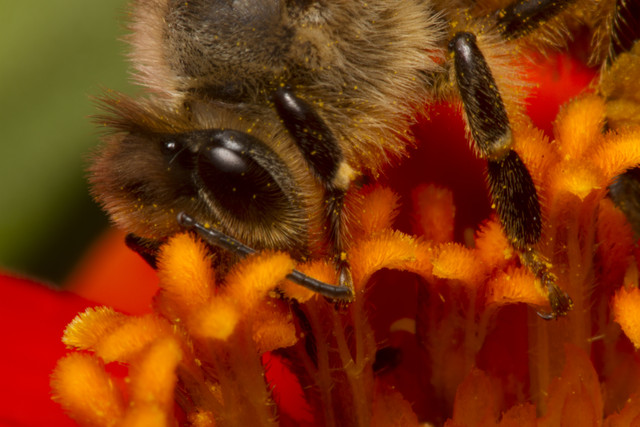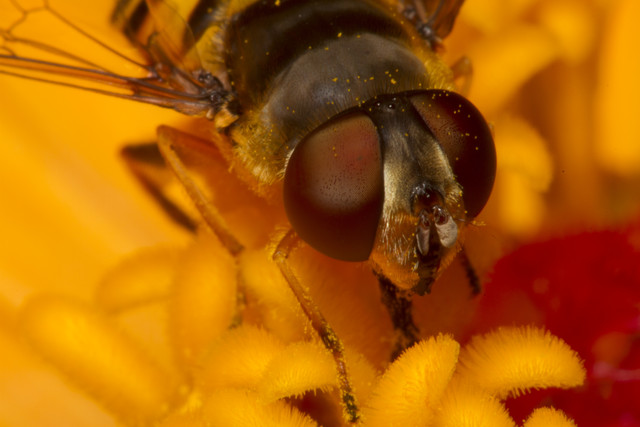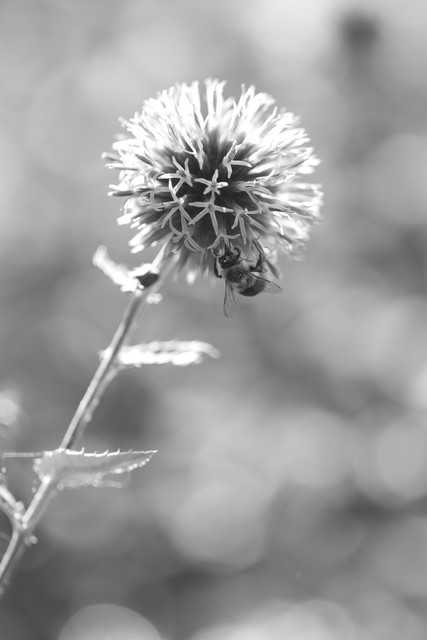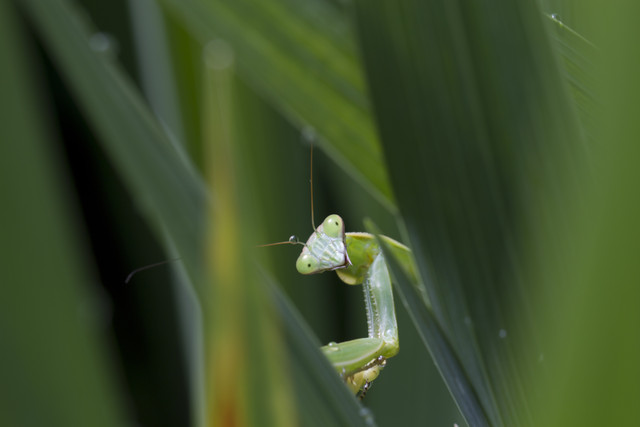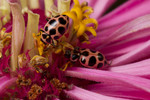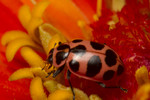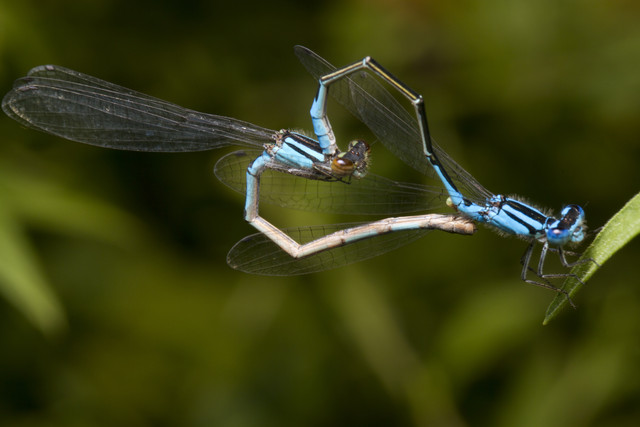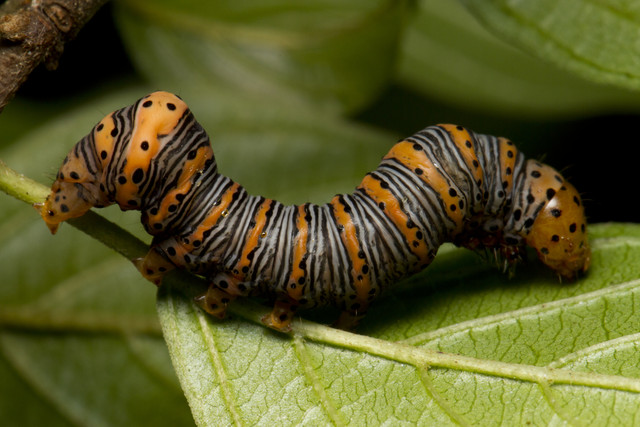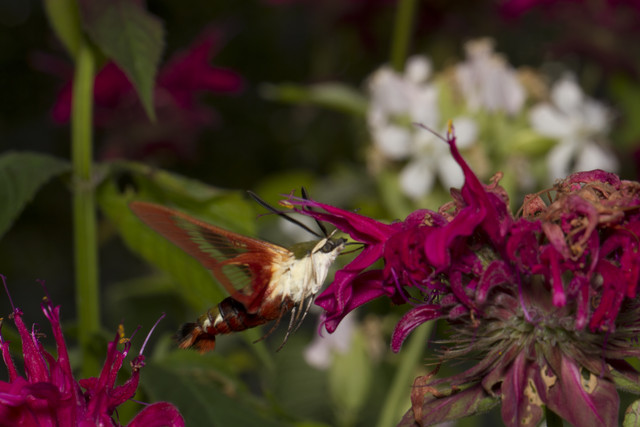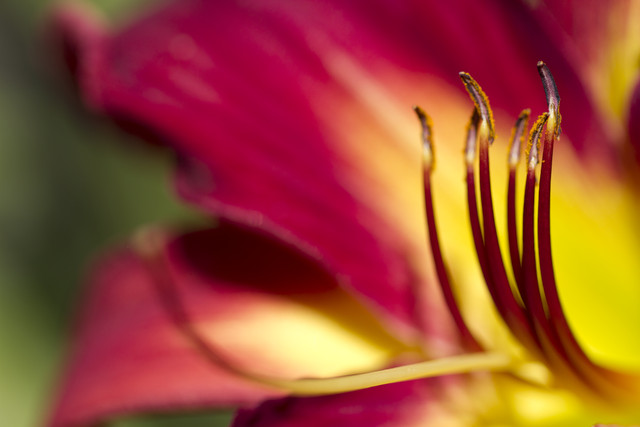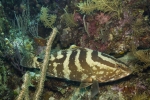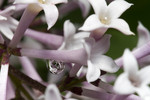flash
Silver-Spotted Skipper Close-Up
ktuli — Tue, 08/09/2011 - 21:44
Silver-Spotted Skippers (Epargyreus clarus) are skittish butterflies, so getting this close to one was a bit of a challenge.
Technical Data: Canon EOS 7D, Canon EF 100mm f/2.8L Macro IS USM, 1/250 sec at f/16. Canon Speedlight 580EX II flash in auto mode and wireless control. Image Stabilization on. ISO 160. RAW processing in Adobe Camera Raw.
I am especially happy with the crisp focus on this butterfly's eyes and on its feeding proboscis - even with some pollen. At full size, you can very clearly see the facets of its eyes, and the individual grains of pollen.
These are the kinds of macro shots that I lreally like - giving a view of something that normally would be overlooked.
- Bill
Five Eyes
ktuli — Sun, 08/07/2011 - 19:13
Ok - while we're on the subject of weird bug trivia... did you know that bees and some flies have five eyes? I knew spiders had eight, but I always thought bees only had two. Until this weekend, when I managed to get a super-macro shot of a bee and a fly and I could see the additional eyes.
Here you can see the bee digging in to get to the nectar of this flower. To the left of the large eye you're used to seeing, you can see the reflection of my flash on one of the other eyes. I was trying for a shot of more of the bee's face, but she was so intent on getting to the nectar that she only ever picked her head up for fractions of a second and was moving quickly whenever she did - the only time she would hold still for any amount of time was while she was feeding.
Technical Data: Canon EOS 7D, Canon EF 100mm f/2.8L Macro IS USM with Kenko Teleplus PRO 300 "DG" AF 2x Teleconverter, 1/250 sec at f/16. Canon Speedlight 580EX II flash in auto mode and wireless control. Image Stabilization on. ISO 160. RAW processing in Adobe Camera Raw.
In this next shot, a fly was feeding the same way, and I was able to get a shot of it. I know it isn't the best of subjects, but I am fascinated by the compound eyes on insects like this, and feel getting the focus right to show the multiple facets of those eyes as a challenge. In this resized version, it isn't the easiest to see, but in the fullsize version, they are plainly visible. Also visible are the three simple eyes in a triangular pattern between the two large compound eyes.
Technical Data: Canon EOS 7D, Canon EF 100mm f/2.8L Macro IS USM with Kenko Teleplus PRO 300 "DG" AF 2x Teleconverter, 1/250 sec at f/16. Canon Speedlight 580EX II flash in auto mode and wireless control. Image Stabilization on. ISO 160. RAW processing in Adobe Camera Raw.
I guess we're two-for-two for that whole "learn something new every day" thing...
- Bill
Poll: High Key Blue Globe Thistle
ktuli — Thu, 08/04/2011 - 16:57
Ok - here's a new one for me. High Key Photography is a style of photography that is generally bright and eliminates any shadows. When I saw this Blue Globe Thistle (Echinops_sphaerocephalus) with this nice back lightning, I decided to crank up the bokeh with a wide aperture and see what I could get.
Due to the proximity of the other thistles, it was really tough to frame it, so I took a couple shots. The first version ended up with an incoming bee in the background that was distracting. The second version was better with the bee having landed on the flowers, but I wasn't as thrilled with the framing. So I took one more shot which ended up with just an edge of the next flower in the frame. I used Photoshop's content aware fill to eliminate the out of focus bee and the other flower as well as to convert each to black and white....
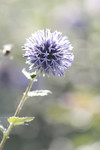 Version 1 SOOC |
|
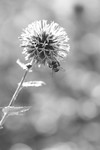 Version 2 B&W |
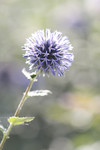 Version 1 Fixed |
 Version 3 SOOC |
|
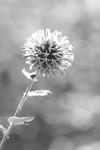 Version 1 Fixed B&W |
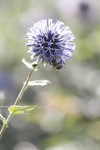 Version 3 Fixed |
|
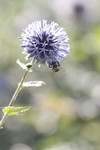 Version 2 SOOC |
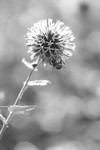 Version 3 Fixed B&W |
Technical Data: Canon EOS 7D, Canon EF 100mm f/2.8L Macro IS USM, 1/250 sec at f/2.8 Image Stabilization on. ISO 100.
So I know this is tough with this many choices, but take a look through the different versions and vote to pick which one you like best. Then leave a comment to let me know what made you choose the one you did.
- Bill
Peek-a-boo Praying Mantis
ktuli — Wed, 08/03/2011 - 20:12
Alright - I had a whole post typed up and scheduled for today, but by special request, I've swapped it out for a later date in favor of this post.
Saturday morning, I was sitting at the computer reading my comics while Anya was out in the yard refilling the birdfeeders. Then she tapped on the window and told me to grab my camera and come outside.
As it turns out, there was a Praying Mantis (Mantis religiosa) in her Uncle's garden which is just a couple doors down.
When I got there, it was tucked pretty far down in amongst some tall plants, and after a couple attempts to get a good angle, I saw this opportunity....
Technical Data: Canon EOS 7D, Canon EF 100mm f/2.8L Macro IS USM, 1/30th sec at f/8. Image Stabilization on. ISO 100. RAW conversion in Adobe Camera Raw.
Why This Photo: Since the mantis was doing such a good job of keeping track of me as I moved around the garden to find a shot, but the talk plants were in the way, I saw this opportunity to frame the shot through the plants. The almost playful, peek-a-boo expression on the mantis was just a happy coincidence.
What Works: The playful look to the shot brings a kind of easy light-heartedness to what otherwise would just be another macro shot of an "ugly" (at least according to most people, but not me) bug. Creative framing using the thick leaves of the plants takes advantage of what was otherwise a problem situation. The bonus of the drop of water on his antenna is icing on the cake.
What Doesn't Work: The focus may be just a tad off or there could be a slight amount of camera shake (that even the IS wasn't able to eliminate), but it is incredibly minor as the fullsize version still shows some of the facets in the mantis' compound eyes. Also, the bright leaves in the front (right and middle) are somewhat distracting.
Tune in tomorrow as I have a rather different set of photos to share, but stuff I really think will be cool.
Thanks for viewing.
- Bill
Pink Spotted Ladybug
ktuli — Tue, 08/02/2011 - 20:18
Have you ever seen a Pink Spotted Ladybug (Coleomegilla maculata)? Before last Sunday, neither had I.
Ladybugs are good insects to have in your garden. They eat aphids, and thus keep your plants safe. Most people are used to the orange variety, so when we found these pink ones, it was worth a few shots.
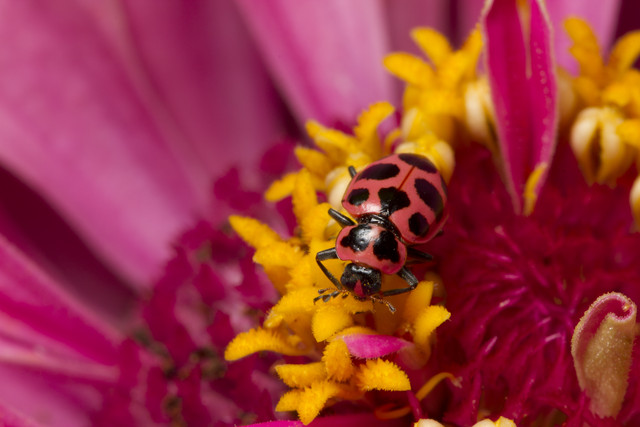
I'm not sure if that last one was really that color or if I messed something up during the RAW conversion. I don't remember it being that dark, but as you can see they seemed to be different shades based on what color flower they were on. I don't know if that is because they can shift their colors or if it is an optical illusion.
- Bill
The Smallest Spider I've Ever Seen!
ktuli — Mon, 08/01/2011 - 20:29
Ok - you were warned. I told you that we were getting back to the bugs and spiders today... well, the spiders at least for today.
I saw this tiny little guy on one of the bushes out in our front yard. And when I say tiny, I mean like head of a pin tiny! Based on my calculations (which are this point are pretty much eyeballed) - this guy is about 2mm in size (maybe... and I do mean maybe... his legs could have reached 3mm fully stretched out). Despite the tiny size, I saw him make jumps of over 65mm! He was absolutely fearless.
This is the only shot of him that I managed to get, and unfortunately I wasn't able to find him again after running inside to get my tele-converter. I've cropped down to show a bit more of the detail (just mouseover to see the original version).
Technical Data:Canon EOS 7D, Canon EF 100mm f/2.8L Macro IS USM, 1/250 sec at f/16. Canon Speedlight 580EX II flash in auto mode and wireless control. Image Stabilization on. ISO 160. RAW processing and cropped in Adobe Camera Raw.
I know many people don't like spiders, but this tiny guy just fascinates me. The thought that there is a beating heart, a tiny brain, everything. It is just incredible. I don't know if this is a juvenile or a full grown adult (I still have yet to find a spider ID book worth buying), so I have no clue on the species here. Regardless, I really love those semi-translucent legs!
Come on... you have to admit that this tiny little guy is pretty cool... and at 2mm, he is absolutely 100% harmless to everything except those other pests in your garden that you don't want anyway!
Give spiders a chance.
- Bill
Mating Damselflies
ktuli — Tue, 07/26/2011 - 07:12
Sorry - still haven't managed to process the PVGP photos, so another bug shot from Beechwood Farms.
This is a pair of mating damselflies.
Technical Data: Canon EOS 7D, Canon EF 100mm f/2.8L Macro IS USM, 1/250 sec at f/16. Canon Speedlight 580EX II flash in auto mode and wireless control. Image Stabilization on. ISO 160. RAW processing in Adobe Camera Raw. Beechwood Farms Nature Reserve, Fox Chapel, PA.
I am hoping to get to the PVGP photos tonight, and if I finish early enough, I'll try to post at least one from that set. Stay tuned.
- Bill
Orange-Striped Caterpillar
ktuli — Sun, 07/24/2011 - 20:22
I have a ton of photos to process from this weekend, but honestly, right now I'm kind of exhausted. So just stopping by to share a cool caterpillar photo...
Technical Data: Canon EOS 7D, Canon EF 100mm f/2.8L Macro IS USM, 1/250 sec at f/16. Canon Speedlight 580EX II flash in auto mode and wireless control. Image Stabilization on. ISO 160. RAW processing in Adobe Camera Raw. Beechwood Farms Nature Reserve, Fox Chapel, PA.
Soon I'll have Vintage Grand Prix and a bunch more spider photos to share.
- Bill
Hummingbird Moth (part 2)
ktuli — Thu, 07/21/2011 - 20:02
Hummingbird moths exhibit what is known as convergent evolution. Basically, what this means is that two species evolve separately but arrive at a very similar result. In this case, the hummingbird moth and its namesake hummingbirds have evolved to have similar appearances, similar habits, similar diets, etc... but obviously, they are absolutely not related at all. This quite often happens when you have animals filling a niche in an environment - in this case, feeding from the nectar of flowers.
These particular hummingbird moths are called Hummingbird Clearwing Moths (Hemaris thysbe). They range in size from about 1.5 - 2.5 inches, and as their namesake implies, they fly just like hummingbirds - even with the humming noise from their wings.
We have had them visit the flowers in our garden at home, but only ever one at a time, and they are incredibly skittish like that. I couldn't even get within 10 feet of those individuals. However, this past weekend, we visited Beechwood Farms Nature Reserve. We started the day by finding a small batch of flowers that had two, then three hummingbird moths flying around feeding. I managed to get in pretty close and get some shots. We then wandered the trails (finding all kinds of bugs that I'll be sharing over the coming weeks) and eventually returned to buy bird seed for Anya's feeders. That was when we found another batch of flowers with at least eight to ten more hummingbird moths. I was able to slowly make my way into the middle of the flowers and sit their firing off shots as the moths flew around me to feed.
Technical Data: Canon EOS 7D, Canon EF 100mm f/2.8L Macro IS USM, 1/250 sec at f/16. Canon Speedlight 580EX II flash in auto mode and wireless control. Image Stabilization on. ISO 160. RAW processing in Adobe Camera Raw. Beechwood Farms Nature Reserve, Fox Chapel, PA.
All of the shots were done with manual focus mainly because I was able to get the manual focus close and then move myself and the camera forward and backward slightly to get the exact focus I wanted. It was still a challenge and I had plenty of moths fly away before I could obtain focus - they don't spend much time at any one flower.
Another challenge was making sure that the flash was pointed in the right direction - if I changed the distance I was shooting at, the flash would not be pointed correctly without adjustment. This tended to make me stick within a specific distance rather than shooting whatever I could see, but this also helps to keep the shots closer to 1:1 magnification.
I am also not thrilled with some of the background in the shots - particularly with the amount of dead/dying flowers that are around. It is an unfortunate side-effect, and I was messing with Photoshop tonight to see if I could remedy it, but so far my photoshopping skills are not quite up to the challenge. Maybe some day in the future.
Anyway, make sure to stop in frequently as I have a bunch of hummingbird moth photos as well as a bunch of other cool things to share. Thanks for stopping by!
- Bill
Depth of Field: Day Lily
ktuli — Wed, 07/20/2011 - 18:07
Alright, as promised, here are some more flower photos.
As I was shooting these day lilies, I tried several different apertures for different looks. Then I decided I would shoot a whole series and possibly print them for a framed set. Unfortunately, I don't think they work well to be framed, but it will work nicely to explain aperture and depth of field.
First - every camera lens has an aperture. It is the opening that allows the light to pass through the lens into the camera. Opening the aperture allows more light in, closing it allows in less light. Aperture values are represented in f/# notation. That notation is actually an equation - focal length of the lens / aperture value. So, if you have an 80mm lens, and select an aperture of f/8, that means that the opening to let the light in is 10mm. Bump up to f/16, and the opening drops down to 5mm.
So how does that apply to depth of field? Well, to start, let's define depth of field... in simplest terms, it is the amount of the scene that is in clarity (not necessarily focus, but we'll leave that for another time). The amount of depth of field is directly related to the aperture. Select a lower aperture value, and you get less depth of field; select a higher aperture value, and you get more depth of field. If you think of it in those terms, it is extremely simple. f/2.8 is going to have much less depth of field than f/16.
Where some folks get confused is when they look at the aperture sizes in relation to the f/# notation. f/2.8 is a very large aperture opening, f/16 is a small opening. Remember - that is because it is an equation, so a larger denominator produces a smaller result (remember your algebra?). However, if you think about it in terms of depth of field, it is somewhat easier to keep straight. Small f/# gives a small amount of depth of field; large f/# gives a larger depth of field.
Here is a good way to understand how a larger aperture opening (small f/#) gives more depth of field than a smaller aperture opening (large f/#) - say you have a bunch of M&Ms and you want to keep track of how many of each color come through an opening. If you have a large opening (large aperture/small f/#), it will be very hard to keep track of each individual candy that comes through, so you do some guestimating. Switch to a smaller opening (smaller aperture/larger f/#) and only a few candies will come through at a time, making your count much more detailed.
The trade off? It will take a lot longer to count the same number of M&Ms with a smaller opening. The same is true of photography and apertures and shutter speed... but we'll discuss that more later.
So take a look at these shots. Mouseover each aperture, and it will show the depth of field provided by that aperture. Slide along the apertures to see the progression. Compare the aperture size with the depth of field. When you get into the higher apertures, the difference is not as drastic, but look to the green plants in the background on the left for the difference.
Make sense? I think I'll probably keep an eye out for other good examples and do this kind of explanation again some time. At the very least, I'll have to show how shutter speed factors into things.
Drop me a comment and let me know what you think of this kind of post. Was it helpful? Was it confusing? Let me know.
Thanks for stopping by.
- Bill


